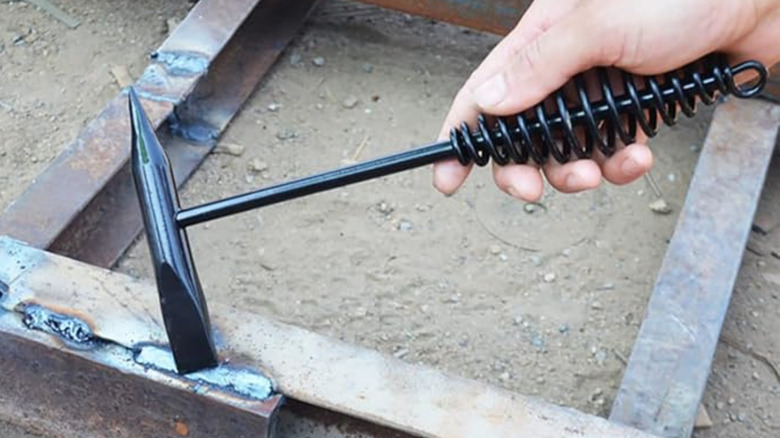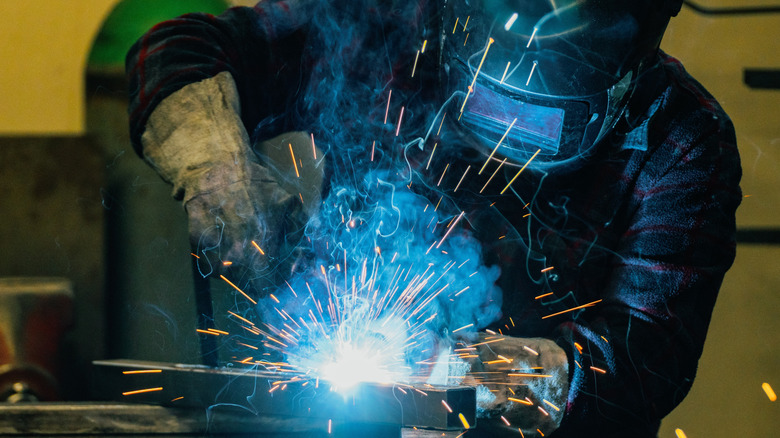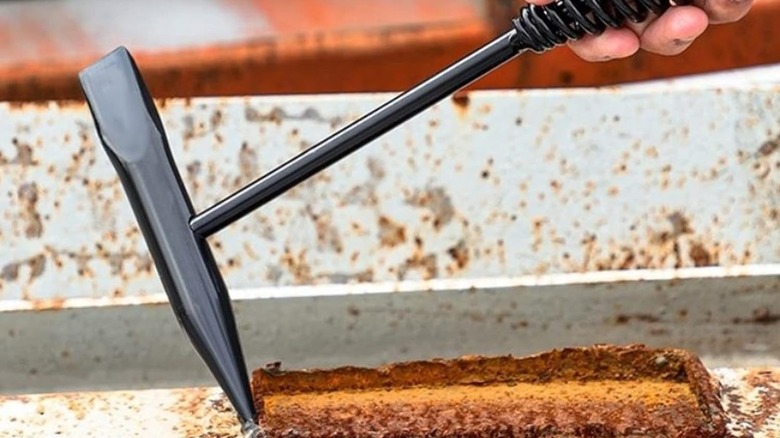Why Do Chipping Hammers Have Spring Handles?
We may receive a commission on purchases made from links.
Welding leaves behind more than just a strong joint — it also leaves a lot of mess. To clean it up, many welders reach for a chipping hammer in their essential set of tools. But while the sharp end gets all the credit, the spring handle goes a long way in keeping things easy for the welder. Welding is tough on the hands, so the tools need to work just as hard to protect the welder as they do to support them on the job.
Chipping hammers are mainly used to remove slag — the crusty layer that forms over a weld during welding. That crust has to go if you want clean, smooth, and safe welds, but removing it isn't exactly gentle work. Each strike sends small shocks up the handle, your hand, and your arm, and during long working sessions, those little shocks can turn into real joint pain. That's where the spring handle comes in, absorbing most of that shock, so your wrist doesn't have to.
Less vibration and more comfort
The spring handle's biggest job is reducing vibration. Welding often involves hours of repetitive motions, and holding onto a solid steel tool while pounding on metal can be punishing for your hands. But with a spring handle, the hammer flexes slightly during each strike, soaking up the jolt that would otherwise shoot through your arm. That makes it much easier to work longer without feeling worn out. Over time, this kind of shock absorption can help reduce the risk of hand fatigue and repetitive strain injuries.
This feature is especially helpful during stick welding, also known as Shielded Metal Arc Welding (SMAW), which produces a lot of spatter and slag. If these aren't chipped off before the weld cools, the joint can end up looking messy and unfinished. It's also worth noting that the spring handle doesn't just protect your hands from the shock, but also improves your grip. The open-coil design helps the tool stay secure in your hand, even with gloves on or in hot, slippery conditions. That added control makes a chipping hammer with a spring handle one of the most useful welding accessories.
Practical design meets safety
Chipping hammers usually have a chisel on one side and a point on the other. The chisel is great for scraping off large pieces of slag, while the point helps with detailed cleaning. Some even come with built-in wire brushes for final cleanup, making them a solid pick for your on-the-go welding kit. No matter the setup, the spring handle makes the tool easier to use, which is a major safety plus in any welding environment.
Adding a spring handle even makes the tool more durable, since it bends and returns to shape rather than taking a beating. This flexibility reduces the risk of cracks or handle damage over time. Plus, with less vibration and reduced hand fatigue, users are less likely to make accidental slips during cleanup. Combined with a hardened steel head and a compact 12-inch length, a spring-handled chipping hammer is an indispensable tool for welders.


